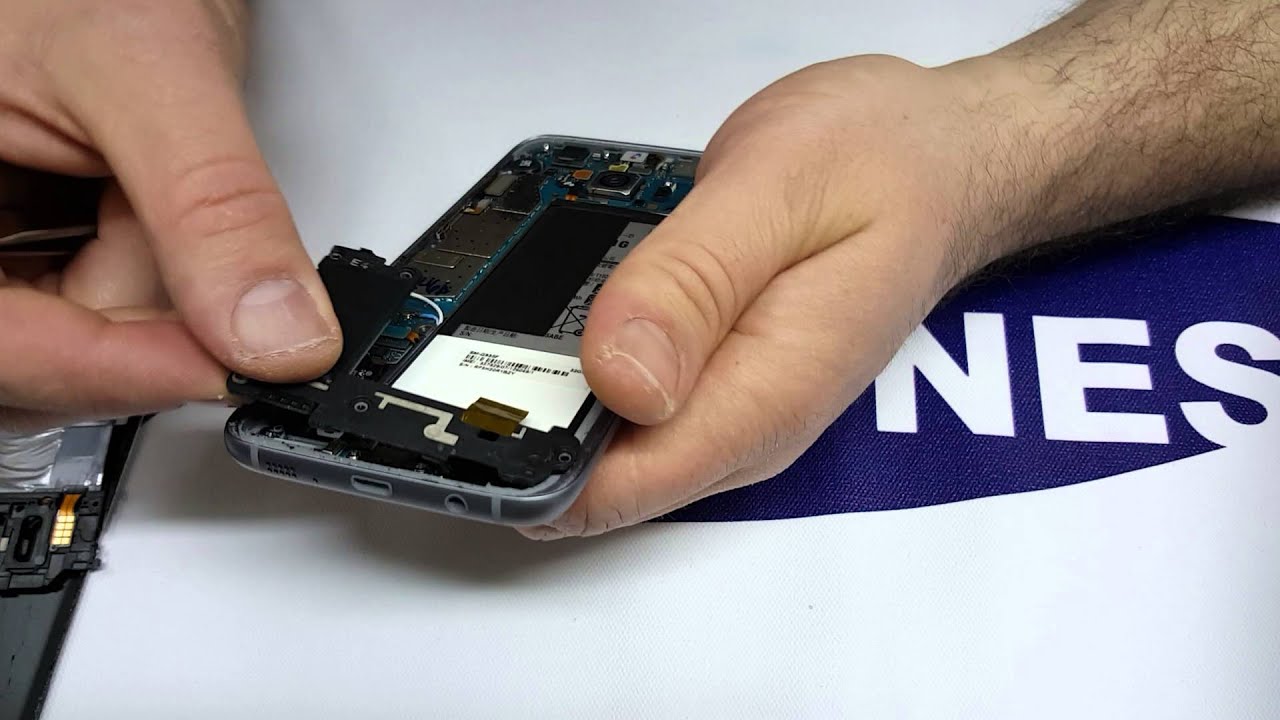Introduction
Welcome to this article where we delve into the fascinating world of smartphones and explore one of the essential hardware components – RAM (Random Access Memory). Specifically, we will be exploring the RAM specifications of the Galaxy S7 Edge. If you’re as curious as we are about the technical details and how they impact your smartphone experience, you’ve come to the right place.
The Galaxy S7 Edge, released by Samsung in 2016, was a flagship device known for its sleek design and impressive performance. RAM plays a crucial role in determining the speed and smoothness of your device operation, making it an important factor to consider when evaluating the phone’s performance.
RAM is like the short-term memory of your device, allowing it to quickly access and store data that is actively being used. The more RAM your device has, the more applications and tasks it can handle simultaneously without slowing down. Additionally, sufficient RAM ensures that your device can handle resource-intensive applications and games with ease.
Having a device with sufficient RAM not only enhances multitasking capabilities but also improves overall performance and responsiveness. It ensures that your device can handle complex tasks, such as running multiple apps, loading web pages quickly, and switching between tasks seamlessly.
The Galaxy S7 Edge was released with 4GB of RAM, which was considered high-end at the time. This generous amount of RAM allowed users to experience smooth multitasking, seamless app switching, and fast app loading times. While newer smartphones may now come with even higher RAM capacities, the Galaxy S7 Edge’s 4GB is still sufficient for most users’ needs, providing a reliable and efficient user experience.
In the following sections, we will dive deeper into the RAM specifications of the Galaxy S7 Edge, look at how RAM management is handled on the device, and explore ways to maximize the available RAM for optimal performance. So, let’s get started on our journey to unravel the mysteries of RAM on the Galaxy S7 Edge!
RAM Specifications of the Galaxy S7 Edge
The Galaxy S7 Edge comes equipped with 4GB of LPDDR4 RAM, which was considered impressive at the time of its release. LPDDR4 (Low Power Double Data Rate 4) is a type of RAM that provides improved power efficiency and faster data transfer rates compared to its predecessor, LPDDR3. This means that the Galaxy S7 Edge offers a smooth and efficient user experience, allowing users to run multiple applications simultaneously without experiencing lag or slowdowns.
The 4GB RAM capacity of the Galaxy S7 Edge ensures that users can multitask with ease, switching between apps, browsing the web, and running resource-intensive tasks without any noticeable performance issues. This generous RAM capacity offers a future-proof experience for users, even with the demanding applications and games available today.
In addition to the ample RAM capacity, the Galaxy S7 Edge also incorporates a powerful Qualcomm Snapdragon 820 or Exynos 8890 processor, depending on the variant. This combination of high-performance RAM and powerful processors provides a seamless and lag-free experience, even when running intensive applications and games.
The LPDDR4 RAM used in the Galaxy S7 Edge operates at a frequency of 1866 MHz, ensuring quick data access and transfer speeds. This translates to faster app launching, smoother navigation, and improved overall responsiveness of the device.
It’s worth noting that the RAM capacity and specifications of the Galaxy S7 Edge were considered top-of-the-line at the time of its release. While newer smartphones may now offer higher RAM capacities, the 4GB of RAM in the Galaxy S7 Edge is still more than capable of handling the demands of modern usage, making it a reliable option even today.
The next section will explore the benefits of having sufficient RAM in your smartphone and how it enhances your overall user experience.
Benefits of Having Sufficient RAM
Having sufficient RAM in your smartphone, such as the 4GB offered by the Galaxy S7 Edge, brings numerous benefits that enhance your overall user experience. Let’s explore some of these benefits:
1. Smoother Multitasking: With ample RAM, you can seamlessly switch between multiple apps without experiencing slowdowns or lag. Whether it’s jumping between social media apps, email, messaging, or even resource-intensive games, having sufficient RAM ensures that your device can handle the workload without any noticeable performance issues.
2. Faster App Loading Times: A device with sufficient RAM can load apps more quickly. The data required for running apps is stored in RAM, allowing for speedy access. This means that you can launch apps and switch between them effortlessly, saving valuable time in your daily smartphone usage.
3. Improved Performance and Responsiveness: Running multiple apps simultaneously can put a strain on your device’s resources. However, with sufficient RAM, your smartphone can handle these tasks efficiently, maintaining smooth performance and responsiveness. You won’t experience lags or stutters even when performing resource-intensive tasks.
4. Enhanced Gaming Experience: Games, especially modern ones with high-resolution graphics and complex gameplay, require a significant amount of RAM to run smoothly. With sufficient RAM, like the 4GB in the Galaxy S7 Edge, you can enjoy graphically intensive games without any noticeable slowdowns or frame rate drops.
5. Seamless Web Browsing: Browsing the web can sometimes be demanding on system resources, especially when opening multiple tabs or loading media-rich websites. With sufficient RAM, your device can handle these tasks effortlessly, ensuring smooth web browsing and quick page loads.
6. Future-Proofing: Having a smartphone with ample RAM ensures that you are prepared for future software updates and advancements in technology. As applications become more demanding and resource-intensive, having sufficient RAM ensures that your device can handle these updates without compromising performance.
By having a smartphone like the Galaxy S7 Edge with 4GB of RAM, you can experience all these benefits, allowing for a smooth, responsive, and enjoyable user experience.
The next section will explore how RAM management is handled on the Galaxy S7 Edge, ensuring optimal utilization of the available RAM.
RAM Management on the Galaxy S7 Edge
The Galaxy S7 Edge employs efficient RAM management techniques to ensure optimal utilization of the available RAM. Samsung’s custom software, combined with the 4GB RAM capacity, helps deliver a smooth and seamless user experience. Here are some key aspects of RAM management on the Galaxy S7 Edge:
1. Adaptive Memory: The Galaxy S7 Edge uses a feature called Adaptive Memory, which dynamically allocates RAM based on usage patterns. It learns which apps you frequently use and keeps them in memory for quick access, while less-used apps are moved to storage. This adaptive approach ensures that your frequently used apps are always ready to launch instantly.
2. App Optimization: The device’s software analyzes and optimizes apps to ensure that they are using the RAM efficiently. By closing unnecessary background processes and freeing up memory resources, the Galaxy S7 Edge maximizes RAM utilization for a smoother multitasking experience.
3. Clearing Cache: Cached data can accumulate over time, occupying valuable RAM space. The Galaxy S7 Edge provides an option to clear app caches, freeing up memory and boosting performance. This can be done manually or automatically to keep the device running smoothly.
4. Priority Mode: When you enable the Priority mode on the Galaxy S7 Edge, the device prioritizes the running app(s) and allocates more resources, including RAM, to ensure a smoother experience. This can be useful when playing games or using apps that require maximum system resources.
5. RAM Boost: The Galaxy S7 Edge also incorporates a feature called RAM Boost, which optimizes RAM usage by temporarily closing idle or inactive background apps. This frees up memory resources and ensures that the active apps and tasks have sufficient RAM for smooth and uninterrupted performance.
Overall, the RAM management on the Galaxy S7 Edge is designed to provide a seamless and efficient user experience. While the device’s software ensures optimal RAM utilization, it’s worth mentioning that users can also take steps to optimize their device’s performance, such as closing unused apps, clearing cache regularly, and optimizing app settings to conserve RAM.
Now that we have explored how RAM is managed on the Galaxy S7 Edge, let’s move on to the next section, where we will learn how to check the amount of RAM on your device.
How to Check the Amount of RAM on Your Galaxy S7 Edge
If you’re curious about the amount of RAM your Galaxy S7 Edge has, there are a few simple steps you can follow to check it:
1. Go to Settings: Open the Settings app on your Galaxy S7 Edge. You can access it either through the app drawer or by swiping down from the top of the screen and selecting the gear-shaped settings icon.
2. Navigate to Device Maintenance: Scroll down in the Settings menu and select “Device Maintenance”. This option might be located under different categories, such as “Device Care” or “Phone Maintenance”, depending on the software version of your device.
3. Tap on Memory: Once you’re in the Device Maintenance section, look for the “Memory” option and tap on it. This will provide you with detailed information about the RAM usage on your Galaxy S7 Edge.
4. Check the RAM Information: In the Memory section, you will find the total amount of RAM installed on your device. On the Galaxy S7 Edge, it should show 4GB, indicating that your device has ample RAM to handle multitasking and resource-intensive apps.
By following these simple steps, you can quickly check the amount of RAM installed on your Galaxy S7 Edge. It helps you gain an understanding of the available resources and ensures you can make the most out of your device’s capabilities.
Now that you know how to check the RAM on your Galaxy S7 Edge, let’s move on to the next section where we will compare the RAM of the Galaxy S7 Edge with other competing smartphones in the market.
Comparing the Galaxy S7 Edge’s RAM with Competing Smartphones
When it comes to RAM capacity, the Galaxy S7 Edge, with its 4GB of RAM, was considered top-of-the-line during its release. However, as technology advances, newer smartphones have emerged with higher RAM capacities. Let’s compare the Galaxy S7 Edge’s RAM with some of its competing smartphones:
1. iPhone 7 Plus: Released around the same time as the Galaxy S7 Edge, the iPhone 7 Plus featured 3GB of RAM. Although it had a slightly lower RAM capacity than the Galaxy S7 Edge, Apple’s optimized hardware and software ensured smooth performance and efficient memory management.
2. Samsung Galaxy S8: The successor to the Galaxy S7 Edge, the Galaxy S8, introduced a bump in RAM capacity, offering 4GB of RAM, similar to its predecessor. This allowed for a seamless transition between the two devices, with users enjoying high-performance multitasking and smooth app switching.
3. iPhone 8 Plus: The iPhone 8 Plus, released a year after the Galaxy S7 Edge, featured 3GB of RAM. While it had a slightly lower RAM capacity, like the iPhone 7 Plus, Apple’s hardware and software integration delivered optimal performance, ensuring smooth operation across various tasks and applications.
4. Google Pixel 2 XL: The Google Pixel 2 XL, released in 2017, boasted 4GB of RAM, matching the capacity of the Galaxy S7 Edge. With Google’s optimized software, the device offered a smooth and responsive user experience, enabling seamless multitasking and efficient RAM utilization.
5. Samsung Galaxy S9: The Galaxy S9, the successor to the Galaxy S8, took the RAM capacity to the next level by offering 6GB of RAM. This increase allowed for even better multitasking capabilities, faster app loading times, and enhanced overall performance compared to the Galaxy S7 Edge.
While newer smartphones now feature higher RAM capacities, it’s important to note that the 4GB RAM found in the Galaxy S7 Edge is still more than capable of providing a reliable and efficient user experience. Throughout its lifespan, the Galaxy S7 Edge has demonstrated its ability to handle a wide range of tasks and applications without compromising performance.
Now that we’ve compared the Galaxy S7 Edge’s RAM with other competing smartphones, let’s move on to explore ways to overcome RAM limitations and optimize the performance of the Galaxy S7 Edge.
Overcoming RAM Limitations on the Galaxy S7 Edge
While the Galaxy S7 Edge’s 4GB of RAM is considered sufficient for most users’ needs, there may be instances where you might want to optimize the device’s performance and overcome any potential RAM limitations. Here are some tips to maximize the available RAM on your Galaxy S7 Edge:
1. Close Unused Apps: Ensure that you close any unused apps running in the background. These apps consume RAM resources, so closing them frees up memory for other active tasks and applications.
2. Clear App Cache: Regularly clearing the cache of your frequently used apps can help free up valuable RAM. To do this, go to the Settings menu, select “Apps,” choose the desired app, and then tap on “Clear Cache.”
3. Limit Background Processes: Limiting the number of background processes and services running on your device can help conserve RAM. You can adjust these settings in the Developer Options menu, accessible by going to Settings > About phone > Software information, and tapping on the “Build number” multiple times to enable Developer Options.
4. Use Lightweight Apps and Alternatives: Consider using lightweight versions of apps or alternative apps that consume less RAM. These versions are often designed to provide essential functionality while using fewer system resources.
5. Disable Animations: Disabling or reducing the animations on your device can help free up RAM. To do this, go to the Developer Options menu mentioned earlier and adjust the animation scale settings to make them shorter or completely turn them off.
6. Use a RAM Booster App: There are several RAM booster apps available on the Google Play Store that claim to optimize your device’s RAM usage. However, it’s important to exercise caution when using such apps and choose reputable ones to avoid potential performance issues.
By following these tips, you can maximize the available RAM on your Galaxy S7 Edge and optimize its overall performance. While these methods may not increase the actual RAM capacity of the device, they can help ensure that the existing resources are utilized efficiently.
Now that we’ve explored various methods to overcome RAM limitations on the Galaxy S7 Edge, let’s summarize the key points we’ve covered so far.
Conclusion
In this article, we have delved into the world of RAM and explored the RAM specifications of the Galaxy S7 Edge. With its 4GB of LPDDR4 RAM, the Galaxy S7 Edge was considered a flagship device, providing users with a smooth and efficient user experience.
We discussed the benefits of having sufficient RAM, including smoother multitasking, faster app loading times, improved performance and responsiveness, enhanced gaming experiences, seamless web browsing, and future-proofing capabilities.
We also explored how RAM management is handled on the Galaxy S7 Edge, with features like Adaptive Memory, app optimization, cache clearing, Priority mode, and RAM Boost, ensuring optimal utilization of the available resources.
Additionally, we learned how to check the amount of RAM on the Galaxy S7 Edge, compared its RAM capacity with other competing smartphones, and provided tips for overcoming any potential RAM limitations.
Although newer smartphones now feature higher RAM capacities, the Galaxy S7 Edge’s 4GB of RAM is still more than capable of delivering a reliable and efficient user experience. It continues to handle a wide range of tasks and applications without compromising performance.
So whether you’re a proud owner of the Galaxy S7 Edge or simply curious about the RAM specifications of this flagship device, we hope this article has provided you with valuable insights and useful information.
Remember, while RAM is an important factor in determining a smartphone’s performance, it is just one piece of the puzzle. The Galaxy S7 Edge combines its generous 4GB RAM with a powerful processor, optimized software, and a range of innovative features to deliver an exceptional user experience.
As technology continues to advance, we can expect even more impressive RAM capacities and improved performance in future smartphones. But for now, the Galaxy S7 Edge stands as a testament to Samsung’s commitment to providing reliable and efficient devices.
Thank you for joining us on this journey to explore the RAM specifications and capabilities of the Galaxy S7 Edge!

























